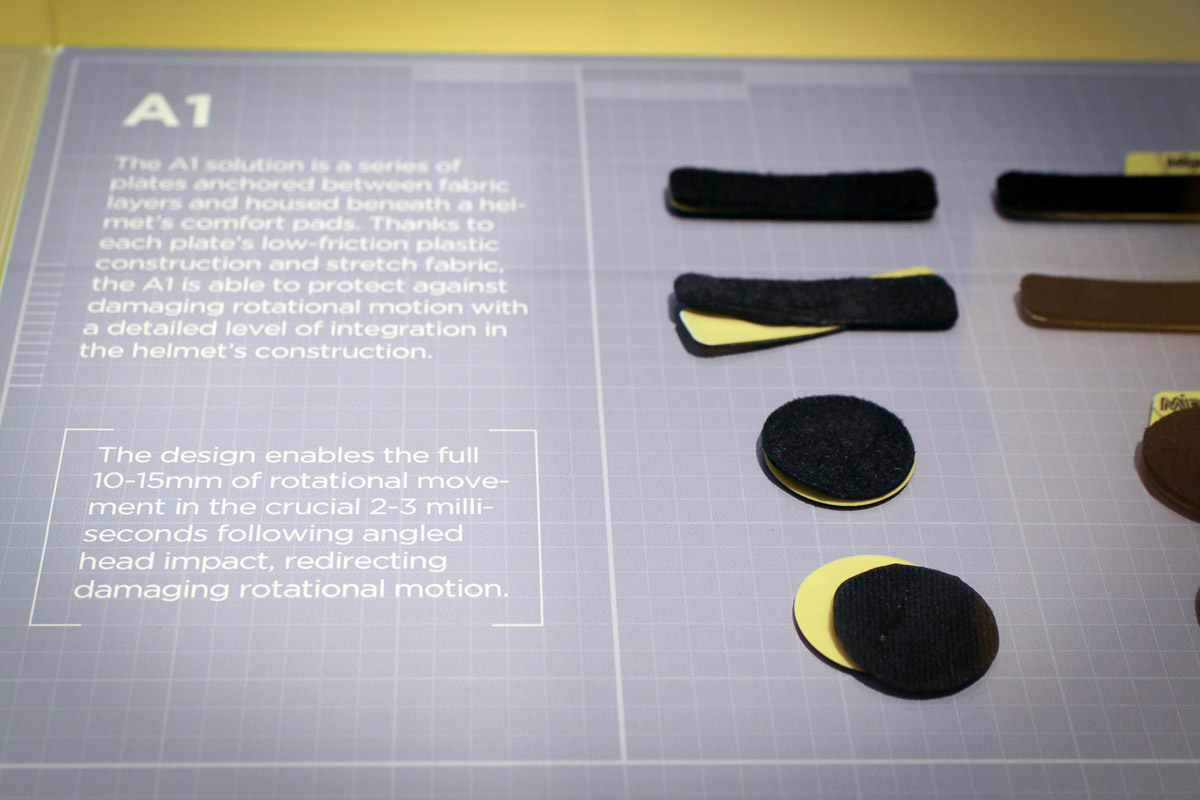When MIPS first debuted, its interior liner was big, and it added quite a bit of weight. Over the past few years, that yellow liner has slimmed down or even disappeared behind padding or inside the EPS foam shell.
In that same time, several helmet brands have introduced their own versions of rotational impact protection. Leatt has their Turbines, Kali has their LDL inserts and the much more affordable cushioning layer on their Pace helmet, and POC debuted their SPIN system. And Specialized recently filed for a patent on a pad-based slip system to accomplish the same thing.

All of those were similar in that they used a soft, squishy elastomer or gel in various shapes to allow the helmet to twist around your head slightly during an impact.
The idea, in case you’ve ignored all of the marketing hype, is that helmets are good at perpendicular, linear impacts, but most crashes involve your head grazing the ground and sliding, which can yank the helmet (and your head) in a rotational plane. Which can hurt your brain. Which is bad. MIPS and its competitors aimed to reduce the speed and suddenness of that rotation. And that’s the whole goal of any bicycle helmet, to slow the impact and reduce the forces that make it to your brain.
Will MIPS get a new design in the future?

The iterations of MIPS we’ve seen have all been just that; iterations on the same concept of a sliding liner between you and your helmet’s outer shell.
Now, POC and MIPS have announced a partnership to develop new rotational-impact protection designs, which should make their way to POC’s 2021 helmets. It’s not the first time MIPS has explored different methods, but it is the first to specify actual products and a timeline for introduction. From the press release:
“In addition, POC and MIPS engineers will work together with the best of their ideas and innovations to develop new rotational impact solutions which will feature in a number of POC helmets to be released in 2021. These will follow on from the (kids’) POCito Crane in 2020, with an objective to enhance comfort, ventilation and rotational impact protection. As part of the new partnership SPIN, POC’s silicone pad technology system, will be phased out and replaced by MIPS solutions in the majority of its helmets in the future.
“Ensuring that rotational impact protection, one essential ingredient in a helmet, benefits from focused time and resource is an important consideration. By working with a leader in the field the collaboration also supports POC’s desire to focus on other safety innovations through its Whole helmet concept™ which focusses on developing enhanced safety as a system, where every material and innovation in a helmet works seamlessly together to protect before, during and after an accident.”
The “whole helmet” concept leads us to believe there’ll be much more integration of design (like MIPS Spherical) as opposed to a liner retrofitted to existing helmet shells. Which begs the question not just whether it’ll be better, but what that’ll do to the price. Early MIPS helmets added a healthy premium to the price, but that quickly dropped to about a $30-40 upcharge. And many MIPS helmets now sit under $100 retail, with some competing systems able to bring those down to $60.
You can read the full press release here.
